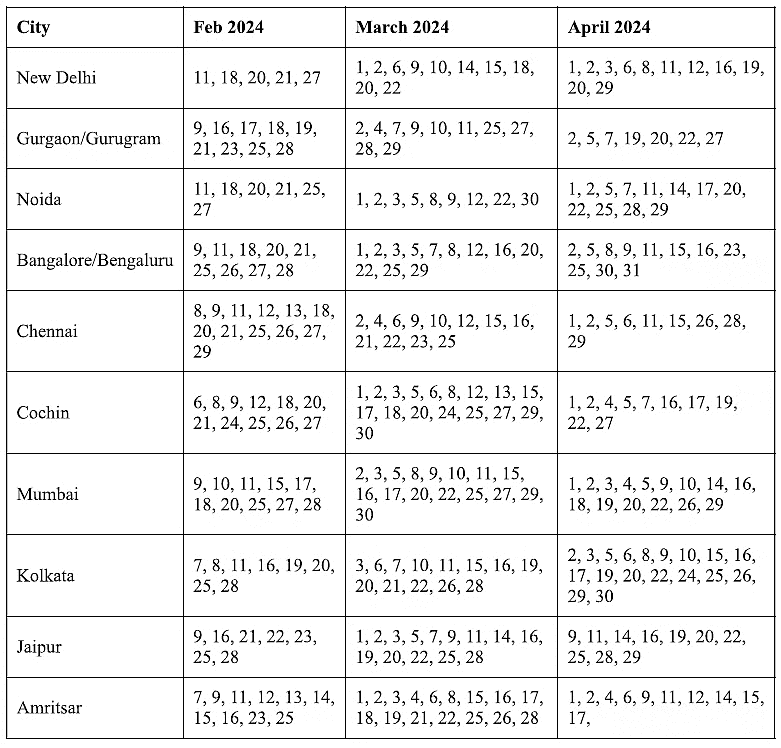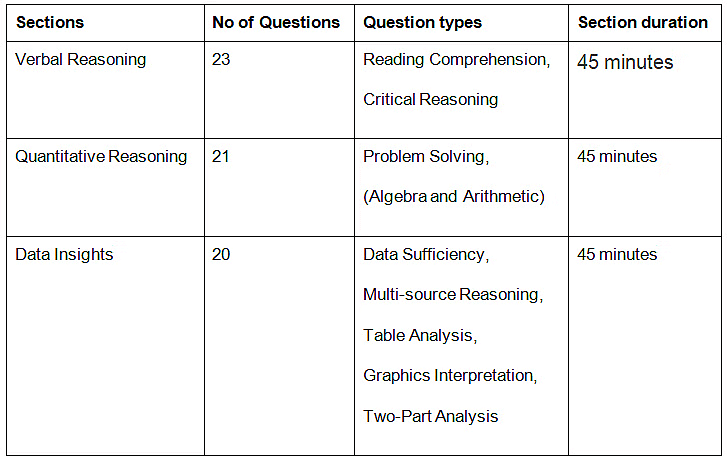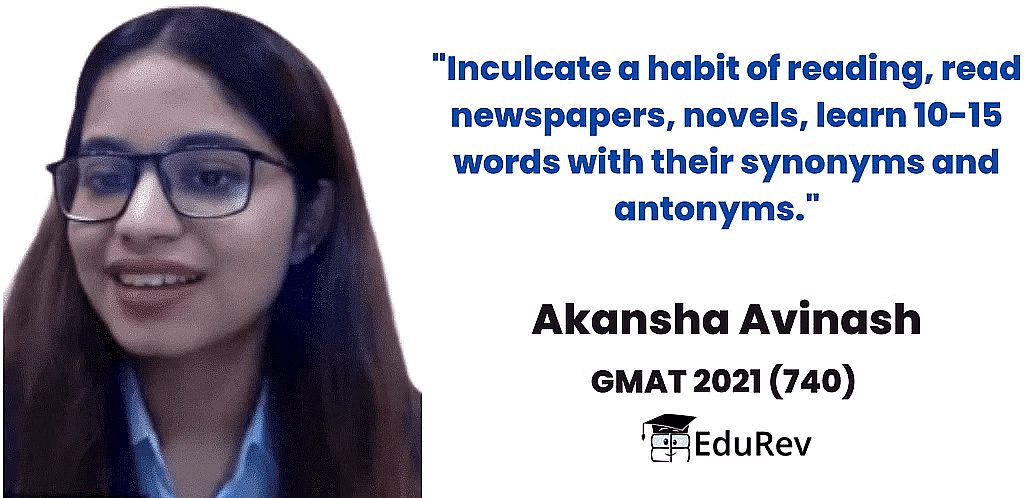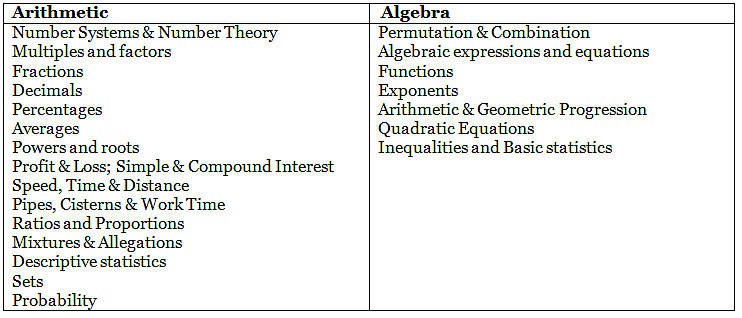Syllabus and Pattern of the GMAT Exam | How to prepare for GMAT PDF Download
GMAT - Graduate Management Admission Test or GMAT exam is conducted by the Graduate Management Admission Council (GMAC) for MBA admissions in many countries around the world. The GMAT is a computer-based exam and the questions asked are MCQ based. Students who wish to pursue MBA or PGDM abroad are required to take the GMAT exam whose scores are used for selection purposes. GMAT scores are the basis of MBA admissions in all the participating countries worldwide and many top institutions in India as well. The GMAT exam is designed to test the skills of candidates that are most important for a management program.
Basic Information about GMAT Exam
1. Age limit: Although there is no upper age limit, the candidate who wishes to take the exam must be 18 years or above. However, candidates in the age bracket of 13 to 17 years can also appear for the exam, with written permission from their parents or legal guardian.
2. Educational Qualification: The GMAC does not prescribe any specific educational GMAT exam eligibility criteria , but the candidates must ensure that they have the minimum educational qualification for studying a management course. The candidate must be a graduate of a recognized university. However, it is also equally important to fulfil the GMAT eligibility criteria as prescribed by the institute for which the candidate is seeking admission.
3. Number of Attempts: The candidate can appear for the test not more than 5 times in a year. However, the total number of attempts in a lifetime is 8. There should be a minimum gap of 16 days between 2 attempts. If a candidate achieves a perfect GMAT score of 800, he must wait for at least 5 years before writing the next GMAT test.
4. Re-application for the Test: GMAT candidates who have not performed well in the test, can re-appear for the test. The GMAT score is valid for five years and candidates who have not enrolled in any graduate program during this period can re-apply for the entrance test.
5. GMAT Exam Dates :
- The GMAT exam is conducted throughout the year, hence students can select the GMAT test date at their convenience.
- Students can visit the GMAT official website to book their GMAT exam dates and slot timings.
- This feature gives the candidates a great degree of flexibility when it comes to choosing the GMAT exam dates. Students are advised to select the date for the GMAT exam at least 2 to 3 months prior.
- This way, students will get time to prepare themselves for the GMAT.
- Apart from this, candidates who meet the GMAT eligibility criteria are also allowed to select the exam center and GMAT test dates.
GMAT Exam Syllabus: Sections
The GMAT Focus Syllabus includes three main sections: Verbal Reasoning (23 Questions), Quantitative Reasoning (21 Questions), and Data Insights (20 Questions), with 45-minute duration for each section:
- Verbal Reasoning: It includes 23 multiple-choice questions on Reading Comprehension and Critical Reasoning.
Update: Verbal section no longer contains Sentence Correction questions. - Quantitative Reasoning: It includes 21 multiple-choice questions on Problem-solving (Arithmetic & Algebra) and there will be no geometry question.
Update: Quant section no longer contains Data Sufficiency questions. - Data Insights (New): This section has 20 questions that can be Data Sufficiency, Two-part analysis, Multi-source reasoning, Graphic interpretation, and Table analysis questions.

GMAT Exam Pattern

GMAT Syllabus for Verbal Reasoning
- The Verbal Reasoning section assesses the test taker’s ability to read, comprehend written passages, and evaluate arguments.
- In the Verbal Reasoning section, test takers have 45 minutes to answer 23 questions.
- The questions within this section are primarily of two types: Critical Reasoning and Reading Comprehension.

(I) Critical Reasoning
Critical Reasoning questions evaluate your capability to construct and analyze arguments and develop or assess action plans. Based on short passages, usually under 100 words, these questions ask you to choose an answer that either strengthens, weakens, or evaluates an argument. No specialized topic knowledge is needed.
- Analysis: Here, we need to analyse an argument. This involves understanding the logical reasoning/structure of the argument and the relationships between various parts of the argument.
- Construction: Here, we are tested on our ability to construct solid arguments. For example – finding what can be logically concluded/inferred or finding what new information would be needed for the argument to hold true.
- Critique: Here, we are tested on our ability to question the validity of arguments, identify how to strengthen or weaken arguments, identify the flaw in an argument, etc. In other words, we are critiquing a given argument.
- Plan: Plan questions test our ability to construct and critique arguments pertaining to a plan of action. For example – a question may ask us to find the flaw in a plan, or maybe the underlying assumption for a plan to work. Plan questions, from a conceptual standpoint, are either construction questions or critique questions.
(II) Reading Comprehension
- Reading Comprehension questions assess your ability to interpret the text, understand the logical connections between key points, draw inferences, and comprehend the evolution of quantitative ideas.
- Mainly the test focuses on the following reading skills: identifying the main and supporting ideas, drawing inferences, applying information, understanding logical structure, and analyzing style.
Primary question types:
- Main point
- Detail/Supporting idea
- Inference
Secondary question types:
- Function
- Application
- Style and Tone
GMAT Syllabus for Quantitative Reasoning
In the Quantitative section of the GMAT Focus Edition, your proficiency in fundamental algebra and arithmetic concepts is assessed, measuring your problem-solving capabilities.
Notably, two significant changes have been introduced in the Quantitative Section of the GMAT Focus Edition:
- Geometry questions are no longer included in this section.
- Data Sufficiency questions, previously part of the Quant Section, have been relocated to the Data Insights section.

Explore all these Quantitative Reasoning topics in our course.
GMAT Syllabus for Data Insights
The Data Insights section is not an addition but a fundamental component of the GMAT Focus, underscoring the growing significance of data literacy and analytics in the business realm. It holds equal weightage in the overall GMAT score.
The recently introduced Data Insights section in the GMAT exam is designed to gauge a candidate's proficiency in analyzing intricate data and deriving meaningful conclusions. It evaluates competencies in data analysis, verbal reasoning, and mathematics, critical skills for informed decision-making in a business management setting.
- Data Sufficiency: Data Sufficiency questions assess the ability to determine whether the given data is sufficient to solve a particular problem. Test takers must evaluate the information provided and decide if it is enough to arrive at a definitive answer.
- Graphics Interpretation: Test takers are presented with graphical representations such as charts or graphs. They must analyze and interpret the data visualizations to answer questions about trends, patterns, or relationships depicted in the graphics.
- Table Analysis: Test takers need to interpret and analyze data presented in tables in this question type. The questions may involve sorting data, identifying trends, or making comparisons based on the information provided.
- Two-Part Analysis: This question type requires test takers to solve problems that involve multiple steps or considerations. It assesses the ability to analyze a situation, apply relevant concepts, and arrive at the correct answer by considering various factors.
- Multi-Source Reasoning: This question type requires test takers to analyze information from multiple sources, including graphic, numeric, and textual data. It assesses the ability to identify relationships among various pieces of information and draw conclusions based on them.
GMAT Focus Edition Scores
Understanding Your GMAT Exam Scores
- The GMAT (Graduate Management Admission Test) is a standardized test used by business schools to evaluate applicants.
- The exam consists of three sections: Quantitative Reasoning, Verbal Reasoning, and Data Insights.
- Your GMAT Exam - Focus Edition Total Score is based on your performance on all three sections of the exam, with each section weighted equally.
Total Score
- Your GMAT Exam - Focus Edition Total Score scale ranges from 205 to 805, and all Total Score values end in a 5.
- The Total Score is calculated by combining your scores on the three sections of the exam.
- Your Total Score is also valid for five years, which means you can send your score to schools when you are ready.
- However, it's important to note that comparing your GMAT Exam - Focus Edition score directly to your score on a previous version of the GMAT is not an accurate comparison.
Section Scores
- Each section of the GMAT Exam - Focus Edition is scored on a range from 0 to 60, with a score interval of 1.
- The standard error of measurement for each section is 3 points.
- The Quantitative Reasoning Score measures your ability to reason mathematically and solve quantitative problems.
- The Verbal Reasoning Score measures your ability to read and comprehend written material, evaluate arguments, and correct written material to conform to standard written English.
- The Data Insights Score measures your ability to interpret and analyze data presented in graphical and tabular form.
Score Scale
- The Total Score scale for the GMAT Exam - Focus Edition ranges from 205 to 805, while the previous version of the GMAT had a scale of 200-800.
- The new score scale was implemented to differentiate between scores on the GMAT Exam - Focus Edition and the previous version of the GMAT.
Your Unofficial Score
- Upon completing the exam, your unofficial scores for the Quantitative Reasoning, Verbal Reasoning, and Data Insights, as well as your Total Score will be displayed on-screen.
- You cannot record, save, screenshot, or print your unofficial score.
- An email notification will be sent to you when your Official Score Report is available in your mba.com account.
Score Penalty for Unanswered Questions
- There is a penalty for not completing each section of the exam.
- If you fail to finish in the allotted time, your score will be penalized based on the number of questions left unanswered.
- Your GMAT™ Exam - Focus Edition score will provide the best reflection of your performance when all questions are answered within the time limit.
Privacy Information Specific to Your Score and Score Reports
- GMAT™ Exam - Focus Edition scores and personally identifiable information will only be released upon your request, except as otherwise required by law or our policies and procedures.
- Your information may be disclosed to detect or prevent unlawful activity or to cooperate in a judicial or governmental proceeding.
|
2 videos|14 docs
|
FAQs on Syllabus and Pattern of the GMAT Exam - How to prepare for GMAT
| 1. What are the different sections in the GMAT exam? |  |
| 2. What is the pattern of the GMAT exam? |  |
| 3. What is the syllabus for the Verbal Reasoning section of the GMAT exam? |  |
| 4. What topics are covered in the Quantitative Reasoning section of the GMAT exam? |  |
| 5. How are the scores on the GMAT exam calculated and interpreted? |  |






















